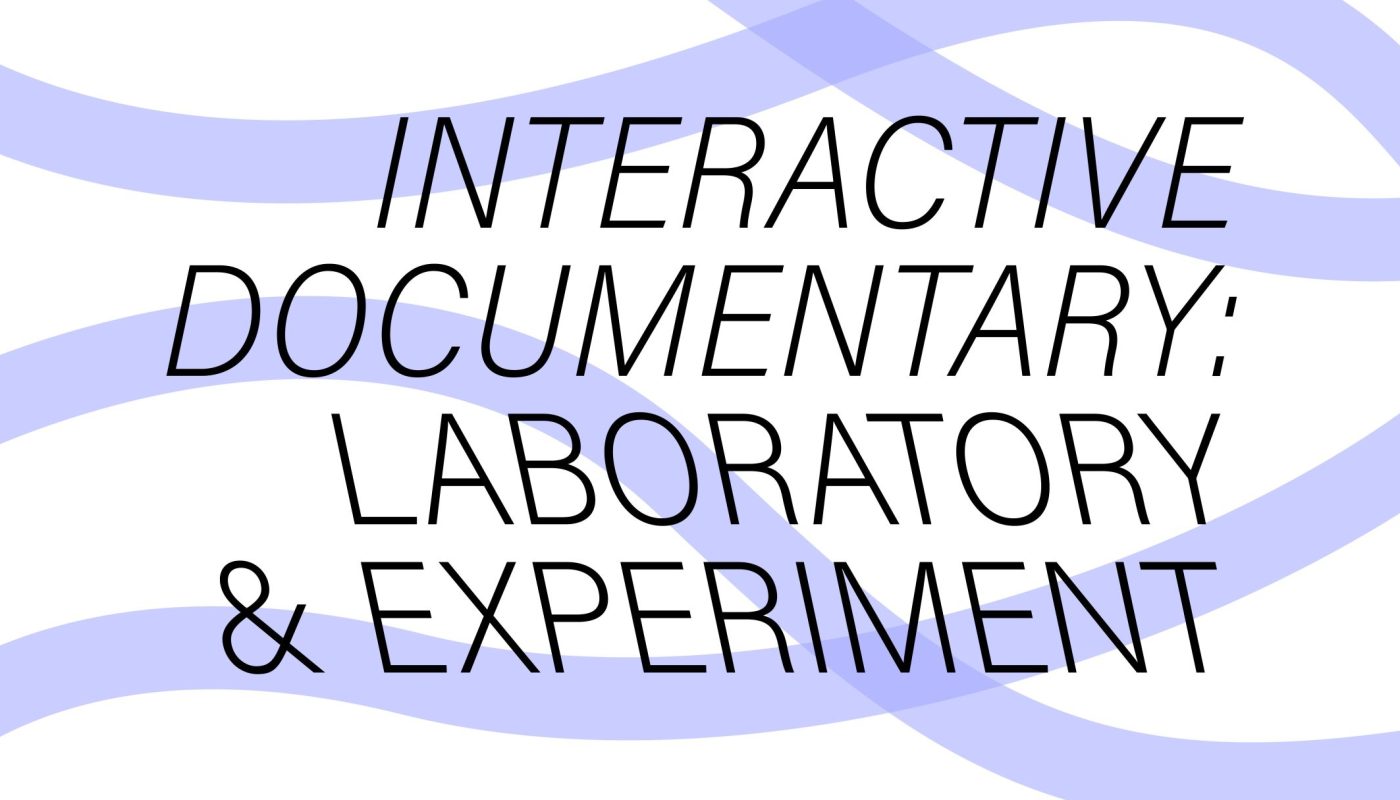Call for Papers
Conference at Lucerne School of Applied Sciences and Arts with the SNSF research project “Interactive Documentary”, February 1. & 2. 2024
Web-based documentaries encourage interaction by offering material to choose from or by showing users different ways to click on and play with content. Often, processuality takes precedence over the idea of a fixed end product and the communication of stable, set knowledge. At the same time, such documentaries offer opportunities for comparison. In this way, these projects take on a laboratory character, in which different forms of knowledge emerge in different experimental arrangements (Latour/Woolgar 1979; Rheinberger 2001).
This experimental character is the focus of our conference: How can a documentary be considered as an experiment and what is specific about documentation as an experimental setting? Does the documentary claim to authenticity and do the expectations to a documentary change, when it is regarded as an experiment and when it is experimented with? What concrete conditions of the experimental setting can be identified each of which give rise to specific forms of the documentary? What dispositif is the basis for viewing interactive documentation as an experiment and how are its individual elements disposed of (by whom)?
What can be said for documentaries in general applies to interactive documentaries in particular: Documentaries experiment with recording techniques and heterogeneous footage, with authorial voices and user input, with abstraction and concretion. They provide evidence, raise objections, and provoke disagreement. They reveal an attitude or abstain from an opinion. This conference will deal with these diverse forms and patterns of reasoning of the documentary – focusing on matters of interactivity. Together, the contributions shall aim to elaborate the specificity of the respective documentary approaches to the experiment.
The three main topics are:
Actors and Actants
Documentary film has always been based on an extensive network of human and technical entities. Developments in technology influence production (Nichols 2017; Nash 2014). Especially in the past twenty years the possibility of producing moving images, videographic recordings, audio recordings and footage has multiplied. In addition to the actual production of recordings, the presentation, collection and storage of audiovisual material in online databases has also increased. For post-production even further agencies of different software(s) and interfaces exist. This is true for professional contexts as well as amateur productions. Does this interconnectedness, generally and/or specifically related to interactive projects, influence the versatility of collaborative, polyvocal, and multiperspectival approaches that are employed? What different approaches and understandings of interactivity are made possible here? Which options and constraints to position recipients and users are used, circumvented or produced? Who or what can be understood as an author in the first place? And where does this authorship take place, if it still exists?
Heterogeneity and Instability
Web-based projects often imply the use of heterogeneous image material and combine a wide variety of images from different sources in individual projects. This leads to a destabilization of images in interactive contexts. Is this heterogeneity fostered by interactive formats? And what does it mean in terms of authorship? This does not only refer to different types or styles of moving images, but the interactive format also involves entirely different types of images, such as the operative image, which not only has an informational value in the documentary, but also becomes clickable and thus a tool of navigation. Interfaces that overlay or flank moving images become part of these heterogeneous arrangements. The interactive documentary gets unstable, amongst other factors, because the sequence of images is repeatedly stopped and waits for the user’s input.
Montage
Interactive projects allow the recipient to intervene in the montage. Hence, in addition to the level of production, they open up the level of reception for experimentation. As a result, montage, the combining and contrasting of different images, is constantly renegotiated: the location of the images between other images varies from reception to reception. This raises questions about the status of montage: To what extent is montage a subject of experimentation here? Does montage still take place at all, and where is the practice shifted or re-localized? How is montage intertwined with the network of interfaces, software and algorithms? Who or what is actually editing in the first place?
The SNSF project will cover your hotel and travel costs. The conference will be in English. Presentations should be 30 minutes in length. Deadline for your proposal (max. 300 words) is October 31st. Please send your proposals to email hidden; JavaScript is required
The conference is organized by Tobias Conradi, Florian Krautkrämer, Florian Thalhofer and Vanessa Zallot.
